イベント詳細
2011.07.25
2011年度春季企画展のご案内
※イベントは終了いたしました
かすかな光をもとめて -療養所の中の盲人たち-
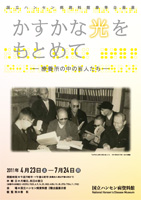
ハンセン病の有効な治療薬がなかった時代、療養所では失明した人が全入所者の約1割を占めていました。失明は、知覚を失い、手足など他の障がいを併せ持つ多くの入所者に、さらなる絶望を与えました。「誰かの助けを借りないと何もできない」とされていた盲人たちの多くは、部屋の片隅で柱を背にし、虚無感の中で一日を過ごすしかなかったといいます。
戦後になり、化学療法の登場や、全国ハンセン氏病患者協議会(全患協)の結成など、大きな変化が起こりました。その中で「自分たちにも自分の力で何かできることがないだろうか」と各園で盲人組織が誕生し、1955(昭和30)年には、全国組織である全国ハンセン氏病盲人連合協議会(全盲連)が結成されました。盲人の幸福をはかることを目的として、生活改善のための運動をはじめ、全患協の運動にも積極的に参与しました。国民年金獲得や不自由者看護の職員切替えの闘いでも大きな成果をあげた全盲連の活動は、今年で56年目を迎えます。
一方、文学や音楽、陶芸、将棋にいたるまで、さまざまな文化活動も展開し、その活躍の場は療養所の外にも広がっていきました。点字を指ではなく、知覚が唯一残った唇や舌先で読むなど、文字通り血のにじむような努力を続けた人もいました。
企画展では、療養所においてどのように盲人たちが生き抜いてきたのか、生活や運動、そして文化活動を中心にご紹介いたします。困難であっても様々な活動に取り組む中で自分の可能性を信じ、かすかな光をもとめようとした姿を是非、ご覧いただきたいと思います。
開催概要
【会期】
2011年4月23日(土)から 7月24日(日)
【休館日】
月曜日、祝日の翌日
(会期中の休館日:4月25日/5月2、6、9、16、23、30日/6月6、13、20、27日/7月4、11、19日)※4月30日は開館
【会場】
国立ハンセン病資料館 2階 企画展示室
【開館時間】
午前9時30分 から 午後4時30分(入館は午後4時まで)入場料無料
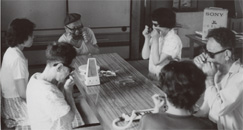
ハーモニカの練習
(菊池恵楓園)
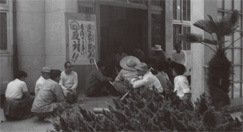
不自由者看護の職員への切替えを求めた座り込み
(大島青松園)1964年
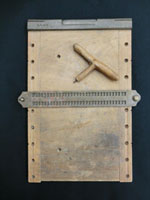
点字盤と不自由な手でも使いやすいように工夫した点筆
(菊池恵楓園)
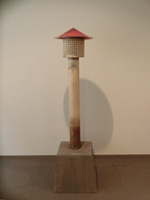
盲導鈴(栗生楽泉園)
音楽を鳴らし、視覚障害者の歩行を助けている。
現在はスピーカーを利用する園が多い。
関連事業
講演会「多磨盲人会ハーモニカバンドとの思い出」
多磨盲人会ハーモニカバンドのメンバーと交流のあったタケカワユキヒデさん(ミュージシャン)をお招きして、思い出をお話しいただきます。
【日時】
2011年6月12日(日)13時30分 から 15時
朗読コンサート
療養所内の盲人の方々が生み出した文学作品を、宴堂裕子さん(女優)、小池保さん(元NHKアナウンサー)の朗読、渥美知世さんのアコーディオン演奏とともに味わいませんか。
【日時】
2011年7月10日(日) 13時30分 から 15時30分
※両日とも入場無料。先着順に150人まで受付。
学芸員によるギャラリートーク
【日時】
2011年4月30日(土)14時 から 14時30分/5月15日(日)14時 から 14時30分
